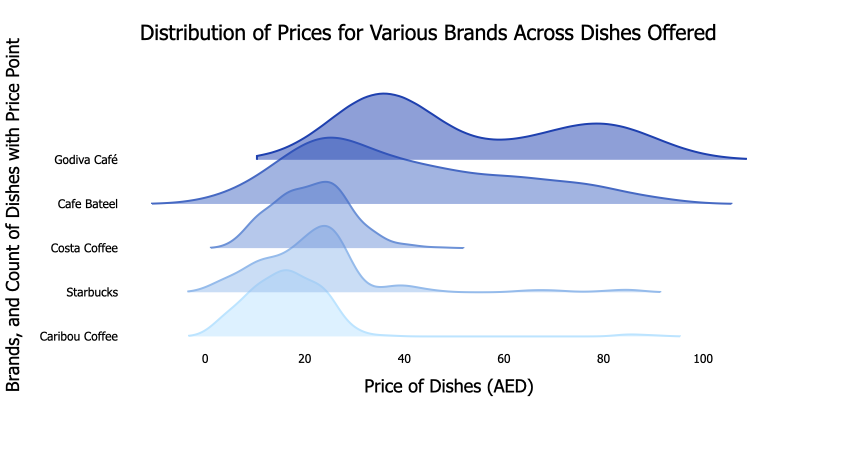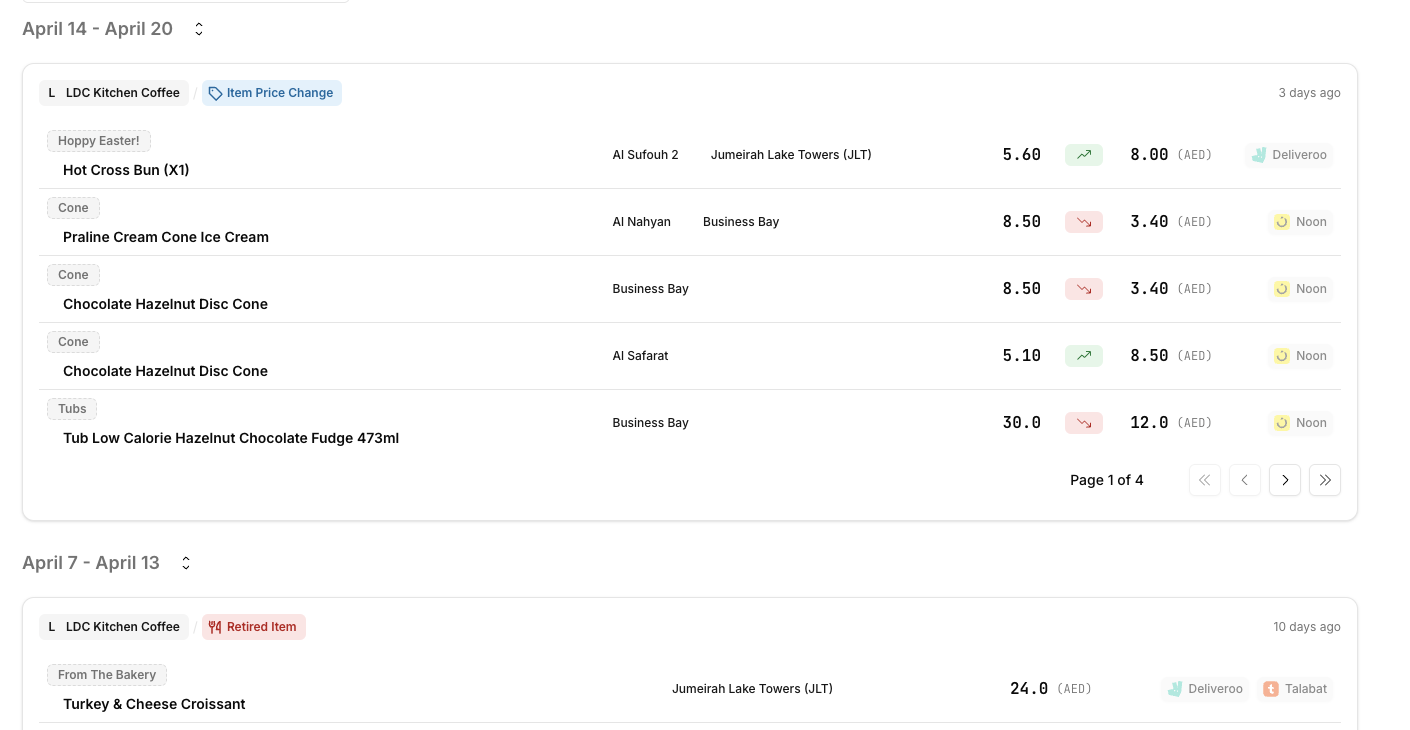Restaurant Menus¶
Info
This dataset is available for any market, samples are listed for similar countries as Unified Restaurant Establishments
Dotlas maintains a unified, structured collection of restaurant menus aggregated from multiple online and offline data sources. This dataset brings together dish-level and section-level information for restaurants, normalized across platforms like delivery apps, brand websites, menu scans, and proprietary field audits.
Each menu is linked to a verified restaurant entity in the Unified Restaurant Establishments dataset and enriched with standardized food categories, inferred product names, and pricing information at both the individual source level and a computed average price across sources.
The result is a powerful, analysis-ready dataset that enables clean comparisons of pricing, product assortment, and section structure across restaurants, brands, and neighborhoods.

Data Dictionary¶
All menu rows are linked to a restaurant and follow a consistent schema, filterable by restaurant_id, item_name, or other fields
| Column Name | Data Type | Description |
|---|---|---|
| restaurant_id | string |
Unique Dotlas-assigned identifier for the restaurant |
| brand_id | string |
Unique Dotlas-assigned identifier for the chain / brand of the restaurant |
| item_name | string |
Name of the dish or menu item |
| item_description | string |
Free-text description of the dish as seen on the source menu |
| section_name | string |
The section of the menu the item belongs to (e.g. Appetizers, Main Course) |
| section_description | string |
Any description available for the section as a subtitle in the menus |
| menu_name | string |
Lunch or Dinner Menu / Drinks Menu or A La Carte, etc. |
| menu_description | string |
A description of the menu if available |
| avg_price | float |
Average price of the item across multiple observed sources |
Tip
This is a snapshot dataset, which means menus can be captured on a periodic basis for markets on a subscription to measure price changes, new or retired items and more over time. This would involve an additional timestamp field to see menus as a time-series.
Additional Menu Fields Available on Request¶
-
Product Information & Categorization
Use our enhanced attributes which detail the product name and product category with sizing. This data is especially useful for comparing menu items by product in the market and judging average cost for a basket of items. Additional hierarchical categorization can also be made available for more intricate analyses.
Column Name Data Type Description product_name stringStandardized product name inferred across menu items (e.g. "chicken wings") item_category stringHigher-level food or beverage category (e.g. "beer", "burger", "dessert") product_sizing stringParsed serving size (e.g. 330ml,12 pieces,1 bottle,Large) -
Stock-Keeping Item Attributes
Information regarding an item's availability by judging if still in stock for purchase, or if specific discounts or promotions are available for items with a strikethrough price shown to customers, along with other metadata.
Column Name Data Type Description is_available booleanWhether or not the item is out of stock is_popular booleanWhether the item is marked as popular by some sources or if it appears in suggestive section names like "Most Trending" or "Best Selling" item_price_discounted stringAvailable alongside item_priceper measurement of restaurant menu to judge if certain items are available with an offer or promotion
Digitized Menu Dataset¶
🗃️ High-fidelity, structured menu data parsed directly from source PDFs using fine-tuned OCR vision & language models. This dataset provides a comprehensive, item-level view of restaurant menus, parsed directly from original menu PDFs. It bridges the gap between unstructured public menu information and actionable, structured data suitable for rigorous analysis.
Useful for analyzing prices for:
- Alchoholic beverages and drinks which are not often listed on delivery apps or online sites.
- Restaurants with a primarily dine-in offering or dining establishments partnered with hospitality groups.
Menu Events (Changelog) Dataset¶
If you're looking for a comprehensive changelog of menu events over time for a market, our Menu Events data product provides a real-time feed of menu modifications across restaurants. This specialized dataset tracks market movements in pricing, product availability, and menu composition on a high-frequency basis, maintaining a detailed record of all changes observed over time.
The data stream can be:
- Consumed via API endpoints for real-time monitoring
- Integrated into notification systems to alert on specific changes
- Used to track competitor pricing and product strategies
- Monitor stock availability and inventory patterns
- Analyze seasonal menu rotations and pricing trends
This enables use cases from automated competitive intelligence to supply chain optimization. The feed format makes it easy to build applications that react to market changes as they happen. Example visualization below.
